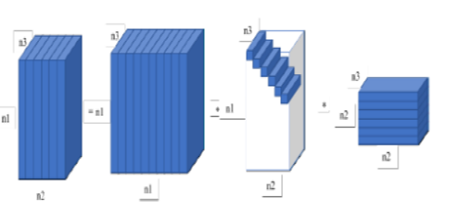


Indian Journal of Science and Technology
Year: 2022, Volume: 15, Issue: 14, Pages: 608-618
Original Article
Sunil Kumar Jyothula1,2*, Jaya Chandra Prasad Talari3
1Research scholar, Department of Electronics and Communication Engineering, JNTUA, Anantapur, Andhra Pradesh, India
2Assistant Professor, Department of Electronics and Communication Engineering, Malla Reddy Engineering College, Secunderabad, Telangana, India
3Professor, Department of Electronics and Communication Engineering, Rajeev Gandhi Memorial College of Engineering and Technology, Affiliated to JNTUA, Nandyal, Andhra Pradesh, India
*Corresponding Author
Email: [email protected]
Received Date:31 January 2022, Accepted Date:20 February 2022, Published Date:09 April 2022
Objective: To propose an optimization approach in recovering of the corrupted tensors in the high dimensional real time data. Methods: The recovering of corrupted tensors is performed by low-rank tensor completion methods. The tensor decomposition methods are used in tensor completion methods. These Tensor decomposition methods; candecomp / parafac (CP), tucker and higher-order Singular Value Decomposition (HoSVD) are used to minimize the rank of a tensor data. The limitations are in finding the rank of a tensor. Findings: The recovered data using the lifting transform induced tensor- Singular Value Decomposition (t-SVD) technique were assessed utilizing the Peak Signal to Noise Ratio (PSNR), Structural Similarity (SSIM), Naturalness Image Quality Evaluator (NIQE), and Perceptual Image Quality Evaluator (PIQE). When compared to state-of-the-art approaches, the low rank assumption condition with the lifting transform consideration gave good data recovery for every missing ratio. Novelty: The missing data is calculated by lifting polyphase structures by utilizing the available data. The polyphase structures are splitting the value into equivalent multiple triangular matrices, these are processed with the t-SVD to have the better approximation tensor rank.
Keywords: Tensor Completion; Transformbased Optimization; 5/3 Lifting Wavelet Transform; Lowrank tensor completion; tSVD
© 2022 Jyothula & Talari. This is an open-access article distributed under the terms of the Creative Commons Attribution License, which permits unrestricted use, distribution, and reproduction in any medium, provided the original author and source are credited.
Published By Indian Society for Education and Environment (iSee)
Subscribe now for latest articles and news.